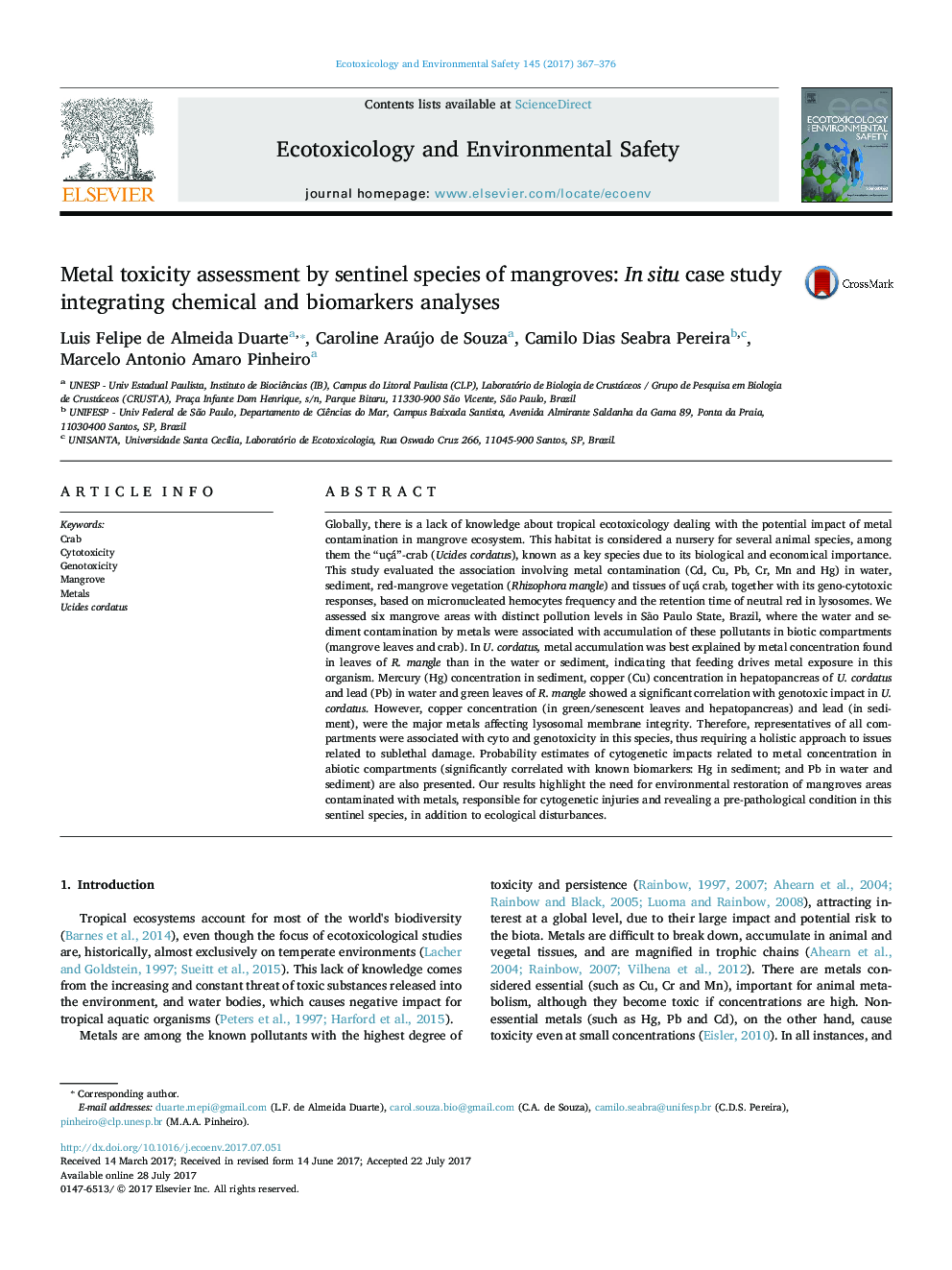| کد مقاله | کد نشریه | سال انتشار | مقاله انگلیسی | نسخه تمام متن |
|---|---|---|---|---|
| 5747725 | 1618919 | 2017 | 10 صفحه PDF | دانلود رایگان |

- Abiotic contamination was linked to the accumulation in the biotic compartments.
- Metal accumulation in U. cordatus was best explained by concentration found in leaves.
- Hg, Cu and Pb showed a significant correlation with cytogenotoxic in U. cordatus.
- Representatives of all compartments were associated with cytogenotoxic in U. cordatus.
- Probability estimates of cytogenotoxic related to metal concentration are presented.
Globally, there is a lack of knowledge about tropical ecotoxicology dealing with the potential impact of metal contamination in mangrove ecosystem. This habitat is considered a nursery for several animal species, among them the “uçá”-crab (Ucides cordatus), known as a key species due to its biological and economical importance. This study evaluated the association involving metal contamination (Cd, Cu, Pb, Cr, Mn and Hg) in water, sediment, red-mangrove vegetation (Rhizophora mangle) and tissues of uçá crab, together with its geno-cytotoxic responses, based on micronucleated hemocytes frequency and the retention time of neutral red in lysosomes. We assessed six mangrove areas with distinct pollution levels in São Paulo State, Brazil, where the water and sediment contamination by metals were associated with accumulation of these pollutants in biotic compartments (mangrove leaves and crab). In U. cordatus, metal accumulation was best explained by metal concentration found in leaves of R. mangle than in the water or sediment, indicating that feeding drives metal exposure in this organism. Mercury (Hg) concentration in sediment, copper (Cu) concentration in hepatopancreas of U. cordatus and lead (Pb) in water and green leaves of R. mangle showed a significant correlation with genotoxic impact in U. cordatus. However, copper concentration (in green/senescent leaves and hepatopancreas) and lead (in sediment), were the major metals affecting lysosomal membrane integrity. Therefore, representatives of all compartments were associated with cyto and genotoxicity in this species, thus requiring a holistic approach to issues related to sublethal damage. Probability estimates of cytogenetic impacts related to metal concentration in abiotic compartments (significantly correlated with known biomarkers: Hg in sediment; and Pb in water and sediment) are also presented. Our results highlight the need for environmental restoration of mangroves areas contaminated with metals, responsible for cytogenetic injuries and revealing a pre-pathological condition in this sentinel species, in addition to ecological disturbances.
Journal: Ecotoxicology and Environmental Safety - Volume 145, November 2017, Pages 367-376